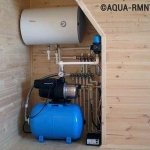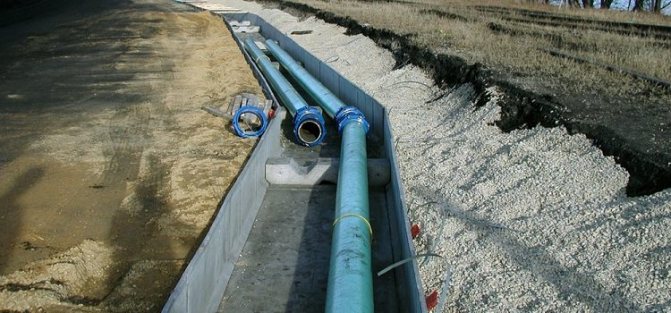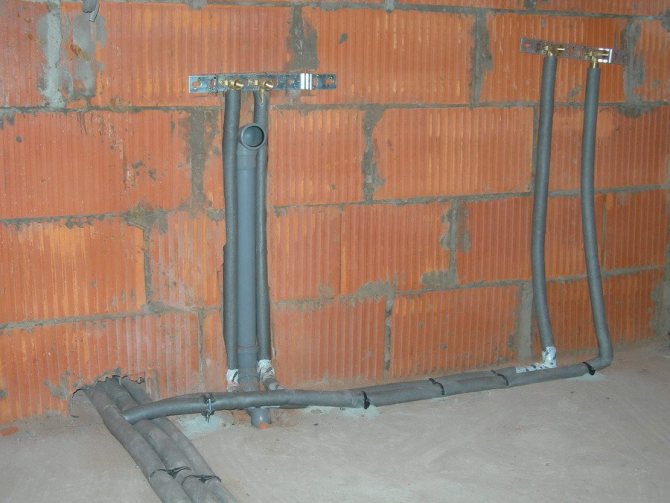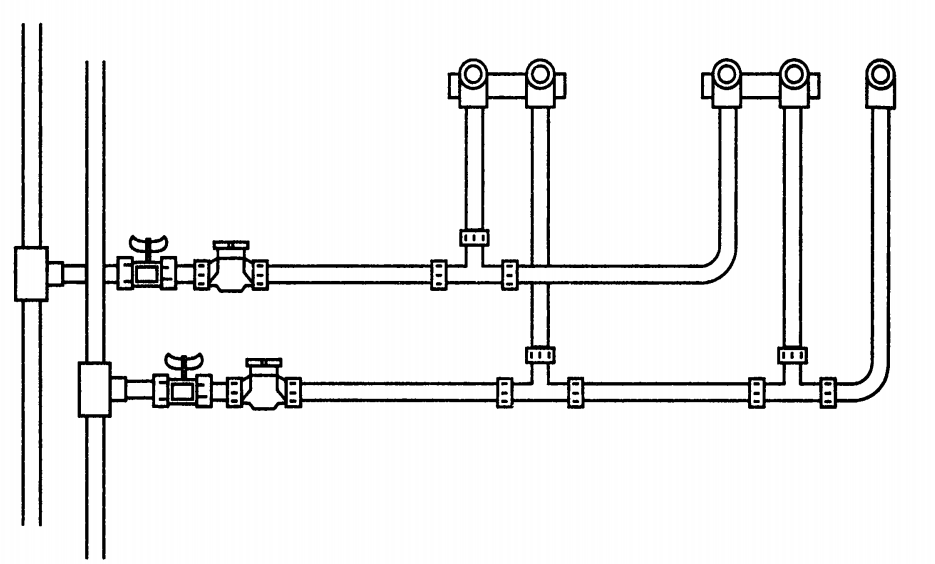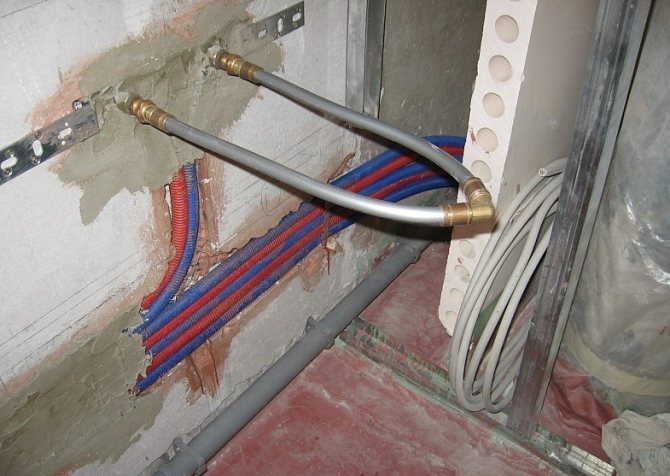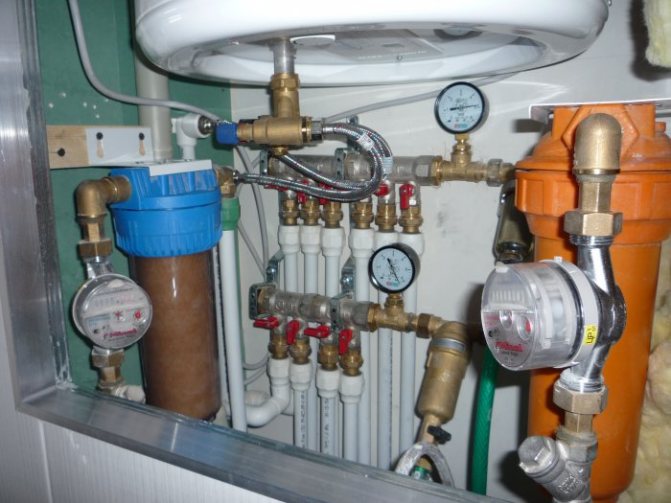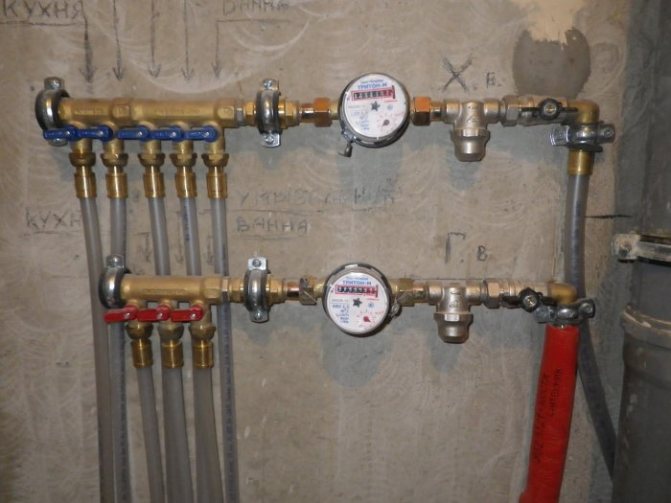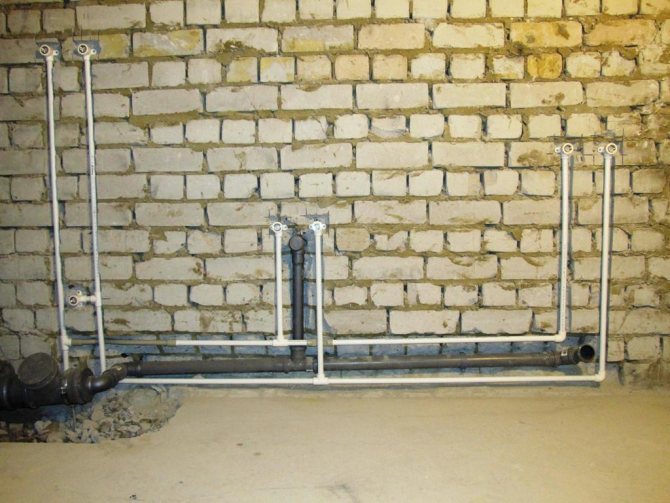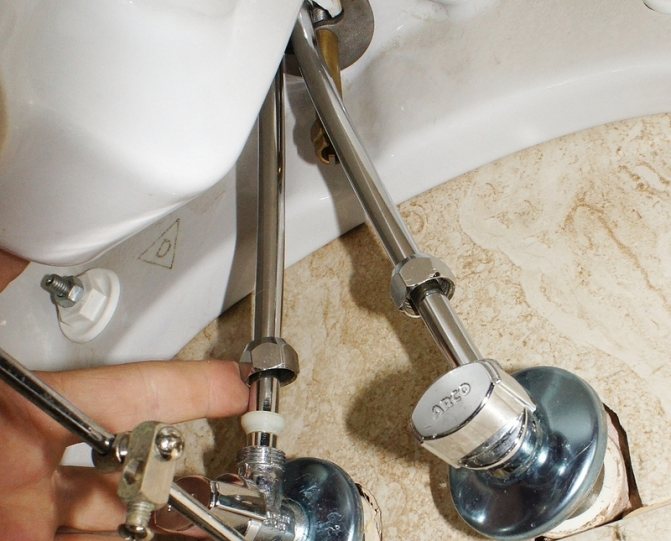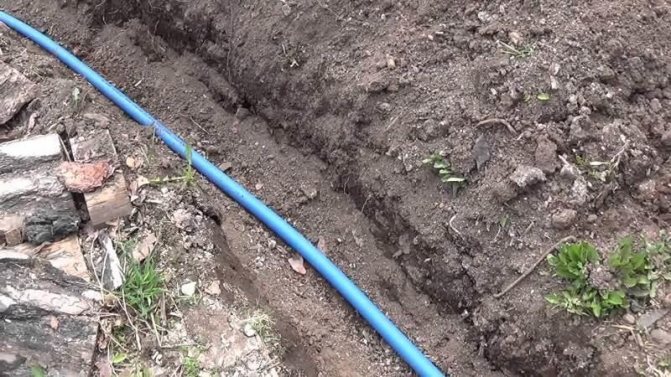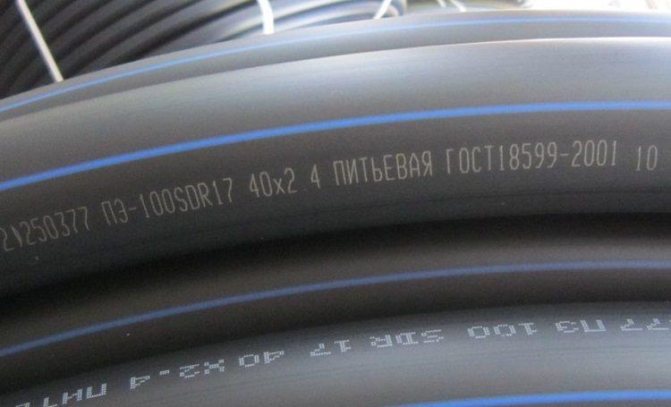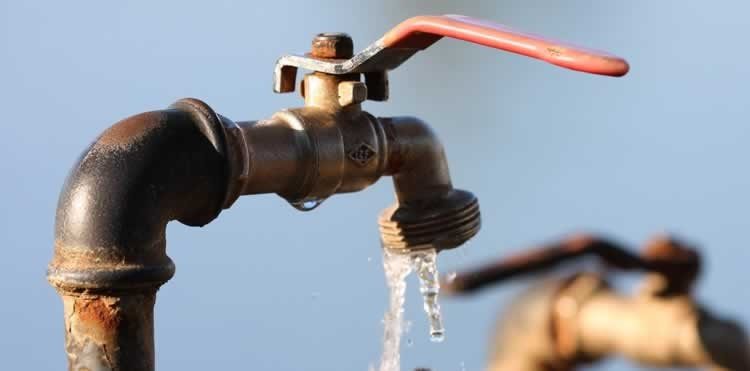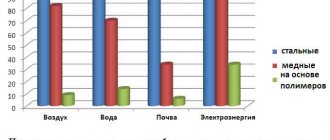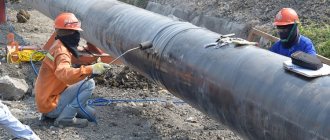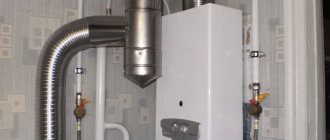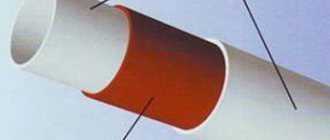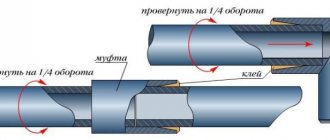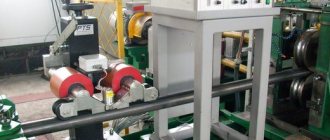Providing a private house with water is one of the main components of a comfortable life outside the city. During construction, engineering networks are laid at the stage of laying the foundation. However, it is possible to improve a long-erected object during its overhaul. The source can be a central backbone system, into which, with the permission of the organization that maintains it, an insert is made. Also, the water supply can be carried out from a well or a well located on the site. In any case, it is necessary to lay engineering communications using modern materials and equipment.
What equipment is needed
To conduct a water supply system to a private house from an autonomous source, you need to stock up on the following equipment:
- pumping station;
- hydroaccumulator (a special container into which a sufficient supply of water is pumped);
- a water treatment system installed on a pipe through which water for domestic needs is supplied;
- storage water heater.

Equipment for providing hot and cold water supply to a private house is compactly located in the basement or any utility room of the facility
Stop valves must be installed in front of all types of equipment used in the system. This will allow you to disconnect devices from the system to repair or replace them without disrupting the water supply to the entire house.
Choosing a wiring diagram
There are two ways to supply water to consumption points, and the choice of a water supply system in a private house with your own hands depends on the parameters of the system, as well as on the intensity of water consumption (permanent or periodic residence, the number of residents, etc.).
Serial connection
This connection is also called tee... The tap, shower and other points are connected in series. This method requires the use of fewer materials (pipes, fittings, etc.), therefore it is cheaper.
The disadvantage of a serial connection when laying a water supply system is the likelihood of a decrease in the pressure pressure at the most distant points with the simultaneous use of several points of water intake.
Manifold connection
Collector (or parallel) connection is the organization of a collector (or two collectors - hot and cold water supply), to which lines are connected leading to each water intake point. To implement such a scheme, a larger number of pipes will be required, however, its principle of operation allows for stable pressure.
Tee and collector water distribution schemes in the house
There are additional nuances when choosing the principle of water supply. Do-it-yourself plumbing installation in a private house can be done in two ways:
- "Blind" lines ending with a dead end (stub)... Such a layout of the water supply system in the house is more economical, however, when supplying hot water, it can create some inconvenience - when you open the tap, you need to wait a certain time until the liquid reaches the plug, and only after that hot water will appear in the tap.
- Circulating closed lines more practical and more convenient, however, for the implementation of such a project, not only a larger number of pipes will be required, but also a special circulation pump.
Experts admit that the most rational is the combined option, in which the "deaf" distribution of cold water is combined with a circulation line of hot water supply.
How to make a plumbing in a private house with your own hands
Water supply can be organized using two types of pumps:
- surface models that are not immersed in the water intake source provide water rise from a depth of 8-9 meters, therefore they are used in wells;
- submersible models are placed directly in a borehole or well, while their power allows you to raise water to a height of more than 200 meters.
Conducting from the well
A trench is dug from an existing or newly built well to the house, the bottom of which should be below the freezing mark in the area. Further, a 32 mm pipe (copper, steel, polypropylene or metal-plastic) is laid at the bottom of the trench at a slight slope towards the source. The slope is necessary in order to prevent stagnation of water in the pipeline. The pipe is led into the basement through a hole in the foundation, which is insulated. Otherwise, in severe frosts, freezing may occur in this place.


The pipeline running from the well to the basement of a private house is laid in a trench dug taking into account the depth of soil freezing in a given area
From the well
It is also possible to provide water supply to the house from an autonomous source, which is usually a well or a well. It is recommended to use water from open reservoirs only for technical purposes; it is not suitable for drinking and cooking.
Video: how to provide yourself with clean water
The laying of communications from the well, protected from freezing and the ingress of contaminated wastewater by a caisson (metal container), begins with assembling a bundle of cable, a safety cable and a water supply pipe glued with aluminum tape. Then a submersible pump is attached to them and lowered into the well. On the surface, the cord is wrapped with insulation, after which they begin to lay it on the bottom of a one and a half meter trench dug from the well to the house.
Important! The depth of the trench may be different, depending on the degree of freezing of the soil in the area.
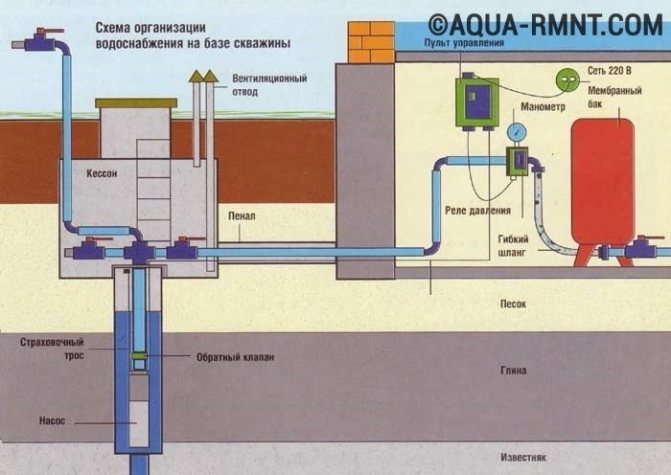

Installation diagram of a private house water supply from a well drilled to the aquifer by a licensed company using a powerful rotary drilling rig
They bring a pipe and cable into the house, then they put:
- a tank that will allow you to turn on the pump as needed;
- control unit designed to protect the system from voltage surges in the network, as well as from overheating.
The sequence of the water supply scheme
In order to visualize how the water distribution in a private house will be carried out with your own hands, you can consider the course of communications from the source to the end point.
1. An individual water unit (well or well) is equipped with pumping equipment, the choice of which is carried out according to the following principles:
- for deep artesian wells, only submersible pumps can be used,
- for narrow channels and casing pipes - only surface units, including pumping stations,
- in other cases, the choice between submersible and outdoor equipment is carried out depending on the technical characteristics of specific models and operating conditions.
2. The piping that brings water to the house is usually buried underground. The depth of the trench is usually chosen taking into account the depth of soil freezing in the region. As an additional protection against freezing, communications are supplied with a heat-insulating layer.
Plumbing into the house from a well with a caisson
3. The point of entry of the pipeline into the house deserves special attention.
- Firstly, the hole for the pipe is made with a large margin - a gap of at least 150 mm on all sides. This allows you to avoid deformation and destruction of communications, if over time the wall begins to sag or deform.
- Secondly, a small section of the pipe, located between underground and protected ground communications and internal wiring in a warm room, is located in the open air. This is the place where the risk of freezing of the pipeline is highest, therefore good thermal insulation is required.
4. The accumulator and control devices are usually installed in the basement, basement room or on the first floor. next to the entry point of the pipeline into the house. From a purely technical point of view, it would be more correct to place such equipment at the highest point, but from the point of view of practicality and ease of use, the lower levels are more suitable. You should only take into account the need to raise water to the upper floors when setting the pressure switch.
The hydraulic accumulator is designed to stabilize the pressure in the communications and prevent frequent switching on (and, accordingly, rapid wear) of the pumping equipment.
The control and monitoring unit includes a pressure gauge, a pressure switch and a dry-running switch, which prevents air entrapment and the formation of air locks in the system when the water level in the well or well drops.
5. Filter systems are completed, depending on the need, with devices for:
- preliminary rough removal of large particles of impurities (more about main filters for water in a private house),
- fine cleaning,
- decrease in iron content,
- softening water.
After that, do-it-yourself plumbing in a private house is performed according to the selected scheme. For a collector circuit, it might look like this:
- Immediately after the accumulator, there is a tee along with a shut-off valve. The tee divides the water flow into two directions - to the house and for other needs (watering, car washing, etc.);
- A deep filter is connected;
- Next is a tee, from which the wiring of water supply pipes in a private house is divided into a pipe for cold water, which immediately goes to the cold water collector, and into a pipe through which water will go to a boiler or other water heater for heating. After heating, the water is sent to the hot water manifold.
In the photo, the water distribution scheme in a private house
Important: When installing water supply in a private house with your own hands according to the collector circuit, it is necessary to install shut-off valves at each point of water consumption.
Features of connection to the central highway
If there is a central water supply in the village, it is not difficult to equip a water supply system in a private house. Especially if the highway runs close to the facility. After receiving permission to connect from the organization serving the water supply system, an insert is made within a couple of days in accordance with the technical conditions and estimate documentation. Digging trenches to the required depth is carried out with the help of special equipment, so excavation takes only a few hours.
Important! The work can be delayed if you have to dig by hand. In some cases, special equipment cannot be used, otherwise the previously laid communications may be damaged.
Next, a pipeline is laid from steel or polypropylene pipes, shut-off equipment is installed in the inspection well and in the house. After the completion of the external work, they proceed to the wiring inside the room according to the scheme.
Choice of pipes
Diameter of communications
When carrying out a water supply system to a private house with your own hands, the correctly selected pipe diameter will ensure efficiency at the stage of installation of the system, as well as avoid unpleasant noise when water flows through communications.
To calculate the parameters of the lines supplying water to the points of consumption, the starting point is total length of each line:
- for a branch with a length of less than 10 meters, pipes with a diameter of 16-20 mm can be used,
- for branches about 30 meters - with a diameter of 25 mm,
- for the longest lines over 30 meters, pipes with a maximum diameter of 32 mm are required.
Important: Particular attention should be paid to the selection of the collector pipe diameter. An insufficient value can cause malfunctions in the system.
The distribution of water in a private house from a collector is calculated based on the fact that each tap has a throughput of about 5 liters per minute. After that, roughly calculate how much water is taken simultaneously from all points at peak moments and choose the diameter of the collector:
- 25 mm for a flow rate of 30 l / min,
- 32 mm for 50 l,
- 38 mm for 75 hp
Pipe material
Plumbing in a private house allows you to use pipes made of various materials, each of which has its own advantages, disadvantages and operating features.
- Copper pipes quite expensive, but their performance is beyond competition. They are corrosion resistant, strong and durable.
- Reinforced plastic products are metal-plastic water pipes
aluminum pipes with polyethylene coating on the outside and inside. This layered structure provides anti-corrosion resistance and strength. The advantage of metal-plastic structures is also resistance to the formation of deposits. Limitations on the use of such communications are imposed by their low resistance to high temperatures - pipes can withstand no more than 95 ° C. In this regard, it is more rational to use them for cold water systems. - Steel tubes could be called the perfect combination of good performance and reasonable price, if not for their susceptibility to corrosion. When installing a water supply system from such products, you will also have to cut a thread on each segment, since there are no special devices for connecting steel pipes. Recently, they are less and less used when laying a water supply system in a country house.
- Polypropylene communications are durable and practical. Moreover, they can be classified as cost-effective solutions. The only inconvenience is that special equipment is required for installation. But it should be noted that this equipment is inexpensive, and almost everyone will quickly learn to use it.
If you decide to stay with polypropylene, it will be useful for you to know how to weld polypropylene pipes.
Read more about the difference between collector and tee water supply schemes here.
Since you will need coarse water filters, we advise you to familiarize yourself with their types.
How to ensure good water pressure
For the normal operation of plumbing and household appliances, a certain water pressure must be maintained in the pipeline. To achieve a sufficient pressure level in the pipeline, a water tank or a hydraulic accumulator is installed in the attic. A water intake is installed in the well, equipped with a filter mesh and a check valve. The water supply to the system is organized using a pump that can automatically turn on when the pressure drops and turn off when the value of this parameter is restored.
When calculating the volume of a water tank, it is assumed that for each person permanently living in a private house, 50 liters per day are required. In addition, a supply of water is laid to extinguish a possible fire. When choosing a hydraulic accumulator, the volume is calculated taking into account the fact that each valve should have 20 liters of flow per day.
